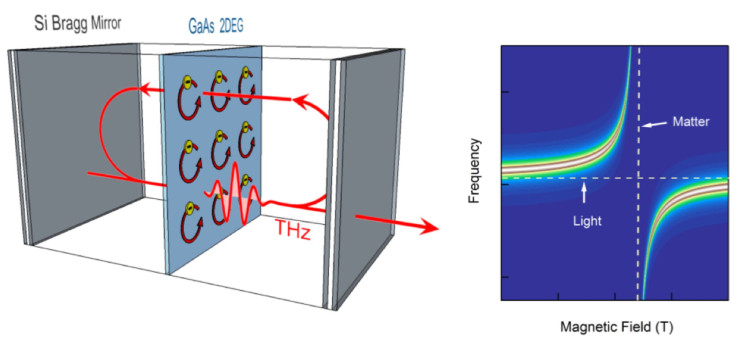Quantum Computing: Light-Matter ‘Coupling’ Experiment Could Pave Way For Scalable Quantum Computers

Studying the interactions between photons — the massless elementary particles of electromagnetic radiation — and electrons — the negatively charged elementary particles found around atomic nuclei — has long been an area of interest for particle physicists. Many believe that observing such phenomena can reveal previously unobserved quantum phenomenon that may eventually help us create viable quantum computers.
On Monday, a team of researchers from Rice University in Houston, Texas, reported that they had, during their effort to create a new condensed matter state, detected one of the strongest light-matter “coupling” phenomena ever observed. This strong link between light and matter particles created “polaritons” — quasiparticles that act as a single unit.
“This is a nonlinear optical study of a two-dimensional electronic material. When you use light to probe a material’s electronic structure, you’re usually looking for light absorption or reflection or scattering to see what’s happening in the material. That light is just a weak probe and the process is called linear optics,” Qi Zhang, a former graduate student at the university and the lead author a study describing the findings, explained. “Nonlinear optics means light does something to the material. Light is not a small perturbation anymore; it couples strongly with the material. As you change the coupling strength, things change in the material. What we’re doing is the extreme case of nonlinear optics, where the light and matter are coupled so strongly that we don’t have light and matter anymore. We have something in between, called a polariton.”
The condensed state of matter the researchers worked on is somewhat similar to what’s known as the Bose-Einstein condensate. Named after physicists Satyendra Nath Bose and Albert Einstein, it is a state of matter created when atoms are cooled to a temperature close to absolute zero (0 Kelvin or -459.6 degrees Fahrenheit). At such an ultra-low temperature, all atoms gather in the lowest possible energy state, lose their individual identities, and act as a “giant matter wave.”
In this particular case, the researchers designed and constructed an extremely high-quality cavity containing an ultra-thin layer of gallium arsenide.
“This general subject is what’s known as cavity quantum electrodynamics (QED),” co-author Junichiro Kono, a physicist at Rice University, said in the statement. “In cavity QED, the cavity enhances the light so that matter in the cavity resonantly interacts with the vacuum field. What is unique about solid-state cavity QED is that the light typically interacts with this huge number of electrons, which behave like a single gigantic atom.”
Studying the coupling of light and matter can eventually help scientists design scalable quantum computers, which are devices that use entangled “qubits” existing in a state of superposition to transmit information orders of magnitude faster than their conventional counterparts.
“The light-matter interface is important because that’s where so-called light-matter entanglement occurs. That way, the quantum information of matter can be transferred to light and light can be sent somewhere,” Kono said. “For improving the utility of cavity QED in quantum information, the stronger the light-matter coupling, the better, and it has to use a scalable, solid-state system instead of atomic or molecular systems.”
© Copyright IBTimes 2024. All rights reserved.






















